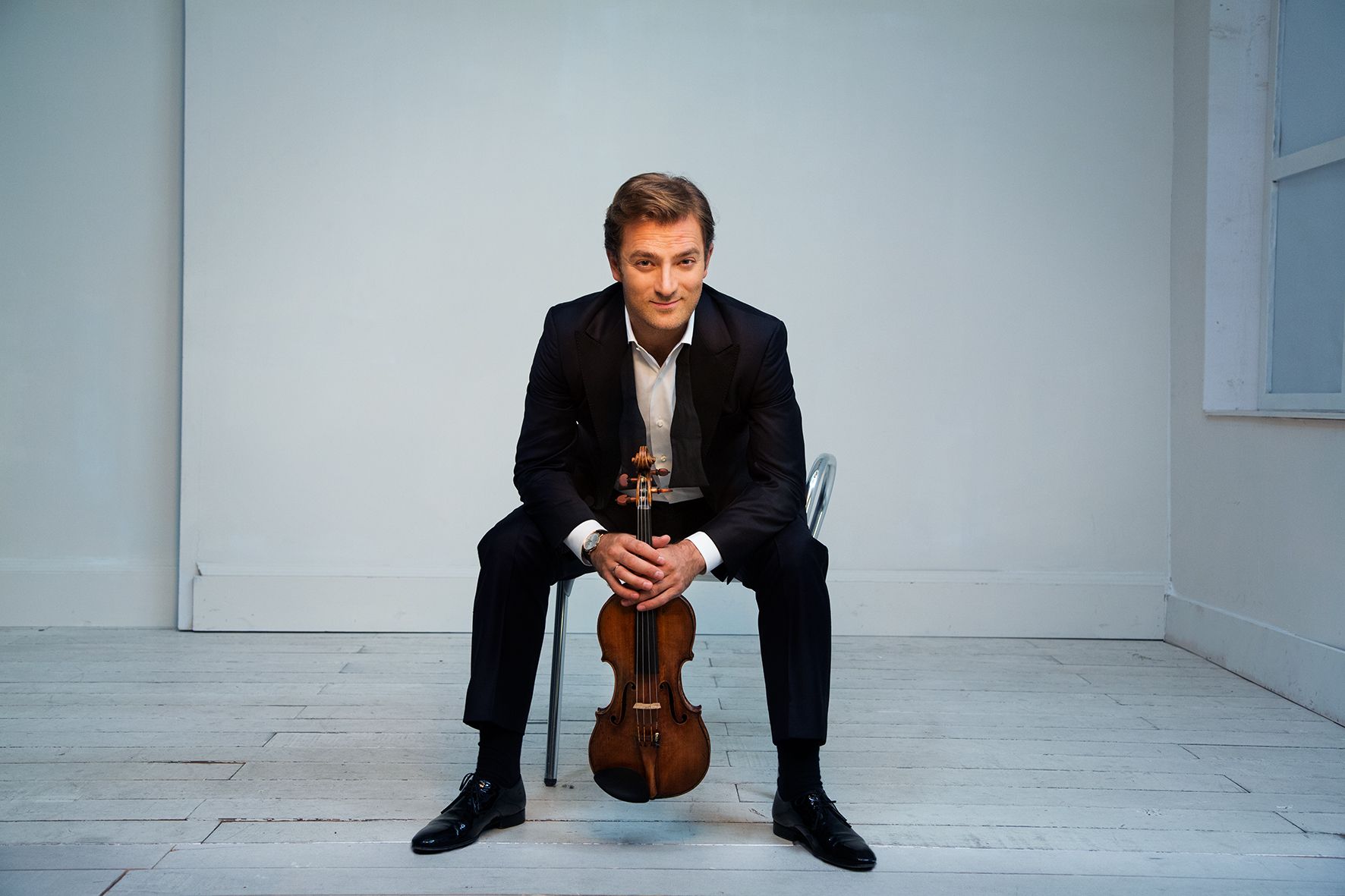Not meat & two veg: Stunning Copland and Barber at the Southbank

Shaw, Barber, Copland Renaud Capuçon (violin); Philharmonia Orchestra / Ryan Bancroft. Royal Festival Hall, London, 26.10.2023
Caroline Shaw Entr’acte (2011, arr. string orchestra 2014)
Barber Violin Concerto (1939)
Copland Symphony No. 3 (1944-46)
One might easily consider this as meat and two veg, on paper, with Caroline Shaw’s Entr’acte acting as ‘overture’ to a concerto, then a symphony. But the pieces themselves were what skewed the cliché: Barber's miraculous Violin Concerto, Copland's phenomenal Third Symphony (or so it seemed in this performance) and a piece by Caroline Shaw.
Renaud Capuçon - last seen in Aix in April - is a real master of his instrument, as those in possession of his recent Mozart DG recordings will surely know.

Here, it was Barber he lavished his attentions on, the glorious Violin Concerto of 1939. It might have sounded outdated even then, but its heady Romanticism is irresistible. Or seemed so in this superb performance, Capuçon relishing Barber's long lines in the first movement. Bancroft - whose Tchaikovsky Fifth at the Proms this year with the BBC National Orchestra of Wales was so impressive - has such a keen ear for detail that he Philharmonia strings’ contributions were no less fascinating than the soloist’s/ There was such internal clarity there. The central Andante was a dream, with an oboe solo from Timothy Rundle that just melted the heart; as did Capuçon's playing, particularly on the G-string. The finale, with its percussion opening leading to a spiky moto perpetuo of bristling difficult, posed no problems for Capuçon. Bancroft was almost as impressive, of one mind with Capuçon. Dancing, almost jazzy at times, this was the perfect close. An encore was expected (by me at leas but surprisingly not delivered, sadly. Renaud Capuçon is one of the finest living violinists, of that there can be little doubt.
Copland’s Third Symphony seems to split the critics. Bancroft, though, was so utterly convincing there was no room for suspecting this is anything other than a pure masterpiece The opening is pure Copland, open spaces, octaves everywhere, expansive and, here beautifully together. What enabled the performance to work, though, was Bancroft’s grasp of the symphony’s structure. Climaxes in the first moveent were supremely well prepared (and one should mention a fine trombone solo from Byron Fulcher). In the second movement, brass imitation ricocheted around the building, the music verging on Ivesian bands at times. This movement has it all: bright, brash, and an almost Bach chorale-like woodwind passage in the ‘Trio’ section, plus a piano inviting u to a hoe-down. After the held-breath Andantino quasi allegretto, with its brilliant scoring (Bancroft highlighted a passage for oboe and second violins that absolutely shone), the finale, where the brass came into their own. This is where the Fanfare for the Common Man was given a second life, the punctuating timpani almost physical in impact. The subsequent dissipation of tension by gossamer strings, bassoon and oboe was a needed relief. The contrapuntal virtuosity of Copland was matched by the virtuosity of the performance. A special mention, perhaps, for Robin O’Neill’s superb bassoon solos.

Copland is not the only composer who splits critics. Pulitzer-winning composer Caroline Shaw’s music has gained real traction in recent years. Her music seems pleasing and clever, but on a rather superficial level. With its origins in Haydn’s minuet in the String Quartet, Op. 77/2, this continues an idea she has of modelling music on earlier works, and taking them for a walk (the piano piece Gustave le Gray pays homage to Chopin’s Mazurka, Op. 17/3). The quasi-Minimalism Shaw brings to Entr’acte is also part of her compositional vocabulary (‘Nimrod’ from Three Essays, for example). She seems to quote Mahler First Symphony at one point, too.
The original form of Entr’acte is for string quartet (premiered by the Brentano Quartet and recorded by the Attacca Quartet on their disc Orange). There are certainly a lot of timbral effects here, and one could not ask for a finer performance (especially the pizzicato cello solo at the end, from Karen Stephenson). But the piece is patchwork and only (pardon the pun) minimally interesting. Its appeal fades long before its conclusion – and it is only12 minutes long. Memories of the Shaw were basically obliterated by the Barber and the Copland, both reminders of the greatness of this fine orchestra.
This concert was part of the Let Freedom Ring: Celebrating the Sounds of America series. The programme booklet, which overs all the concerts, is a collectors’ item in its own right. Essays by Philip Herbert (Songs of Freedom) and Dr Samantha Ege (“I’ve Known Rivers”: Converging Streams in Black Renaissance Artistry) are nearly works of art in themselves, and so full of information.
As an addendum, here's a performance of Copland's Third from 1976, with Leonard Bernstein conducting the New York Philharmonic Orchestra:
... and here's the Barber Violin Concerto with the same forces and the addition of Isaac Stern as soloist:
Belos is a link to the Amazon site for the Stern, a snip at £5,99 and coupled with John Browning's superb recording of the Piano Concerto.
